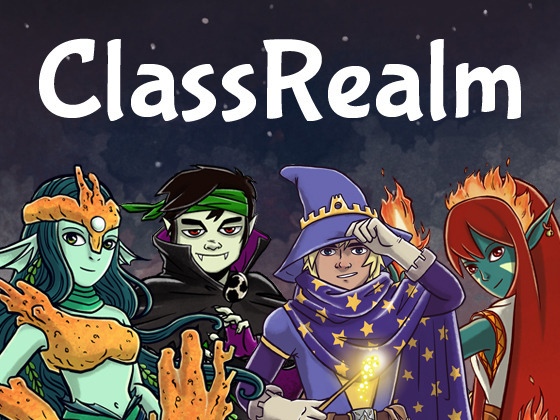Looking to justify a move to eLearning? Need a way to trim the training budget? These simple in-browser ROI calculators will ask you the questions you might not think to ask yourself if you don’t normally deal with budgets.
Category Archives: Uncategorized
Cognitive Development of Twentysomethings
I remember being told as an undergraduate student by Prof Peter Metcalf that one’s choice of major didn’t really matter and that we could reassure our parents that there would be plenty of middle-management positions waiting for us down the road. Many, if not most, people do not work in the same field as what they studied as an undergrad, he said. I was thus reassured with my choice to give up engineering in favor of cultural anthropology. I’m sure he was right about the second part. I’m still waiting to see about the first.
On another occasion, my advisor, Prof Adria LaViollete, seeing that I wanted to pile on more courses within my major, said that specialization should be saved for grad school. Undergrad was the time for exploration, not specialization. (I ignored her advice and now regret it.) Either way, grad school can come years after the bachelors degree and subsequent formative work experiences. I did take that advice. I’ll never really know if I could have made better decision, but a recent NIH study suggests that a final period of brain development is occurring in people’s twenties. This is worth considering in an era where 1) young people are pushed to make decisions about how they will earn a living and 2) most people will have multiple careers in different fields because of a more dynamic/chaotic job market.
ClassRealm
Classrealm is an idea for a learning management system (LMS) unlike any I have seen. It’s a struggling idea (failed its kickstart fundraiser), but worth thinking about. The LMS itself will be nothing new. But layered over the LMS nuts and bolts will be a Tolkienesque fantasy world. Students have a hero persona that advances a la video game style as the student completes assignments. The fantasy component is meant to motivate students to learn the standard state/local curriculum. Gamification, as Classrealm’s creator suggests, is a way to motivate students to complete otherwise unappealing tasks.
My take is that Classrealm is more of a different way of grading than a different way of learning. Instead of a grade point average, you have a hero persona with health a la a video game. Assignments are linked to quests and so on. My first impression is that Classrealm will only function as a crutch to help a curriculum that students do not find interesting. Nevertheless, it may very well find success in reaching students who would otherwise fall behind their classmates.
I see great potential in using games for learning and development in every part of society, but they have to be designed from the ground up. I think that the real sea change in using games to teach will occur when professional game designers with a serious budget (think Sony or Nintendo) are presented with the task of creating games to teach the content.
Sept 30 update: I started a Gamification course created by Keven Werbach at UPenn delivered through Coursera. Apparently, the field is moving more quickly than I thought. I found two up and running gamification services: Bunchball and Chore Wars, but there are more out there. Very similar to ClassRealm, both reward users for tasks completed outside the game. Chorewars is free/cheap and aimed at home users or cubicle workers who are tired of cleaning up others’ break room messes while Bunchball looks like a more serious business venture for more serious subscription rates. Personally, I would like to see some webisodes of a show about heavy users of Chore Wars in the same vein of humor as The Guild or The Office.
Simulated Field Experiences
Getting out of the classroom is almost always a relief for students. Teachers typically enjoy it as well, albeit less so if the students are coming along. I’m kidding! I always loved field trips with students. I do recall that the administrative burden was irritating and legal burden of leaving school grounds with students was worrisome. Those practical considerations aside, just about any contemporary theory of learning and development will argue that field experiences should happen as often as can possibly be facilitated. I think this is supported by the fact that while I regret a few of my lectures or activities that bored or confounded students, I do not regret a single trip, as they all provided memorable, fun learning experiences.
Simulated field experiences can be either a second-best option or can offer good pre and post trip activities. Gigapan allows users to upload and view very large pictures. The images are so large, they allow a level of zoom that feels to the viewer like “traveling” through the image. They are typically so detail rich, one image alone could be the topic of a lecture or an assignment. A teacher can throw with a digital projector onto big screen to support a short lecture or class discussion. An instructor could also use an image as a source material for an assignment requiring individuals or small groups to explore the images, both at a wide-angle view and in close detail.
Special cameras are used to capture many of the following images, but you may be surprised by the resolution of some older technologies. Be sure to use the zoom feature and wait for the image to clarify if you have a slower connection.
- Here is a potential simulated geology trip: http://www.gigapan.com/gigapans/97851
- Find people and buildings around London http://www.360cities.net/london-photo-en.html
- View of historic Cincinnati! More hidden people! http://www.rochester.edu/news/photos/daguerreotype.html
Learning Moodle

I have known about Moodle for a few years, but I have not fully explored its capabilities. To familiarize myself, my plan is to create a simple course using Moodle, about Moodle. I will update my progress as interesting things happen. I am hoping to complete in less than a week.
So far, I have found a slideshow that uses a Lego blocks as a metaphor to explain the modular nature of Moodle. This model provides both a structure for this mock course as well as content, so I will speak to this model as I make progress. According to this model, any Moodle course will include four elements:
- information storage
- communication among classmates
- evaluation of self and others
- collaboration on projects and problems
These four provide an easy-to-understand yet powerful model of what should be in a course. If the designer can meet the requirements of all four components, a robust learning environment is probably being created.
3/28 update: The course outline is up. Some of the supporting activites need to be completed, but essentially, I have met my goal of publishing a Moodle course to the Web. This was easier than I thought it would be. If you are familiar with any LMS or CMS, you should be able to navigate the design interface pretty quickly. I would think that any course with a solid set of supporting materials in digital formats could quickly be uploaded to create a good hybrid or e-learning course.
7/31 update: I just completed a contract to create a course in Moodle! My task was to convert a three-hour-long narrated slideshow into an online DIY course using Moodle. I decided to break the slideshow up into 7 sections and create a module to go along with each section. Within each section, I created supporting documents, quizzes, and forums. Unfortunately, the structure of the content is all proprietary, so I can’t share it. I did it all in about 35 hours (with breaks, of course!).
Flipping the Classroom
The “flip” refers to where students first see the content and where they try to apply what they have learned. The traditional model has lecture in class and assignments done primarily outside of class. Homework and assignments are typically done in isolation from the teacher and other students. Any problems had to be solved (or skipped) by the student until the next class. In a flipped classroom, the polished lectures or videos are available online for students to view at home. In class, students apply what they learned outside of class in groups with the teacher available to help.
Two years ago I reviewed Rethinking Education in the Age of Technology by Allan Collins and Richard Halverson in another blog*. The concept of flipping reminded me of one of the authors’ points: technology can efficiently deliver polished lectures/readings/videos to students. When teachers are relieved of this task, they can concentrate on helping individual students or small groups. For a teacher seeing 150 students a day, this is an invaluable efficiency. Flipping the classroom promises exactly this. Students watch lecture or read a chapter outside class via the school’s learning management system, then apply it inside class where the teacher’s expertise or elements such as a laboratory are immediately available.
I am certain that there are teachers who have been doing this for a while. Flipping is not a new concept, but it is reinforced by the affordances of the Internet and the increasing access students have to streaming content.
*update: my old company “rebooted” the blog. i will try to find a copy and post it.



